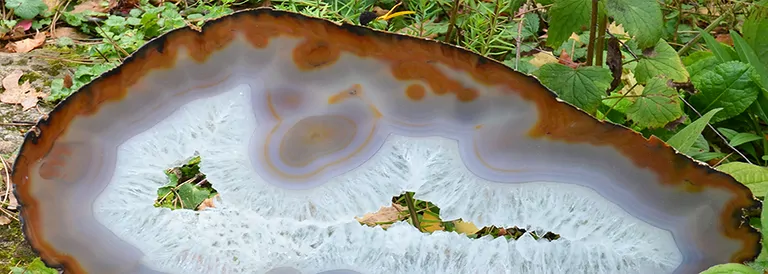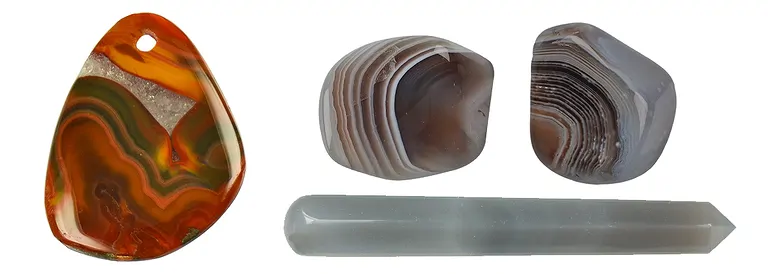
Agate - Meaning, effect and application
Agate is the perfect stone for autumn, when everything goes a little slower than in the warm summer days. With a last burst of color, nature says goodbye to hibernation. The time of reflection and pause begins, with cozy long evenings, we are increasingly looking for the community and the closeness and warmth of our fellow human beings.
In autumn, but also at all other times of the year Agate supports to take a point of view in which we can relaxed, but concentrated look at our lives. The conscious processing of what we have experienced during the year and our lives is supported with the help of the stone. Mental maturity and inner stability are a good starting position to not be distracted by external influences and impressions. In particular, the colorful patterned Condor Agate supports us to discover and use the creative potential that lies dormant within us.
Agate can support the exact listening into ourselves and the critical introspection. Tensions and contradictions can be recognized and thereby resolved. The stone can help solve problems by focusing on the essentials. Spiritual growth and rational thinking are supported so that we can look at life and our place in it calmly and learn from it. From these insights about ourselves grow strength and stability.

The agate got its name in ancient times from the river Agates (today Drillo, Sicily).
Agate is banded and often of gray or brown color - but sometimes white, pink, black or red. Agate is often found to have different colored bands in a single stone! Agate forms in volcanic rocks after they have cooled. Liquid volcanic rocks contain gases that form bubbles of different sizes. Siliceous water penetrates into these bubbles. Gradually, this solidifies and dries out. One layer after the next is deposited, resulting in the varied stripes and other patterns in agate.
Agate was already used in ancient times for art objects. The Sumerians had beautiful seals made of agate, and the Bible describes that the breastplate of the high priest of Jerusalem had twelve stones, one of which was an agate. Many churches have chalices made of Agate, which were made in Italy and Germany about 600 to 1100 years ago.
The gemstone industry in Idar-Oberstein in Germany also started as an agate industry in the 15th century. Carvers used locally occurring agate and developed techniques and tools to produce art objects, jewelry, and fine carvings.
Mineralogical profile of Agate
Composition: SiO2
Mineral Class: Oxide, Quartz Group
Formation: igneous, as spherules or almonds in low-silica volcanic rocks (melaphyres, porphyries)
Color: mostly various earthy hues
Gloss: Wax luster
Crystal system: trigonal
Moh hardness: 7
Cleavability: No cleavability, uneven, conchoidal fracture
Localities: Southern Brazil (Rio Grande do Sul, area around Salto de Jacui and Irai), Uruguay, USA, Mexico, India and other